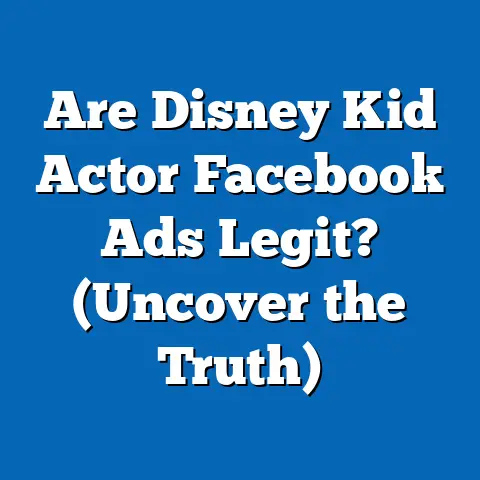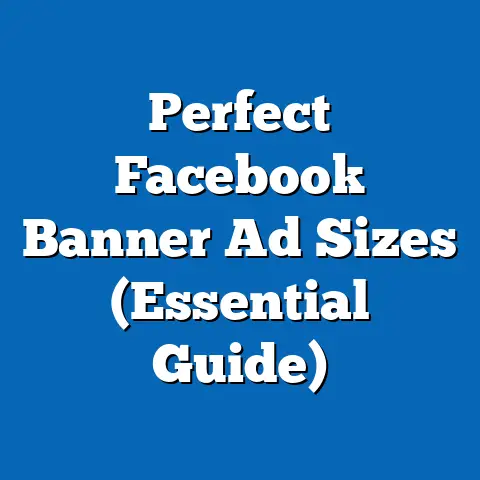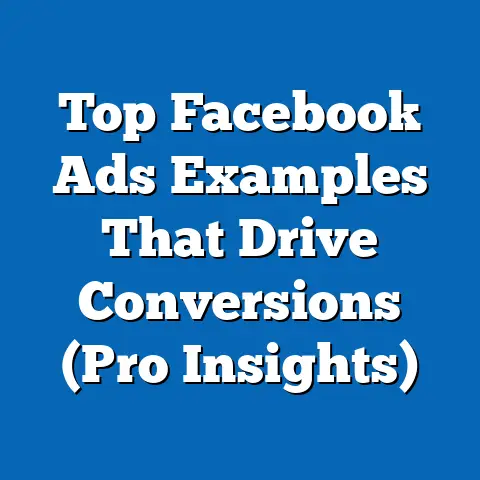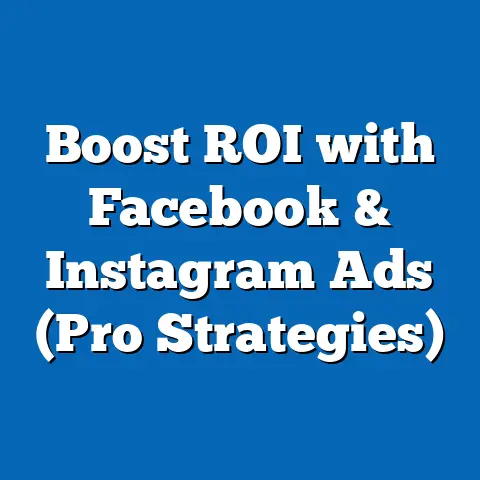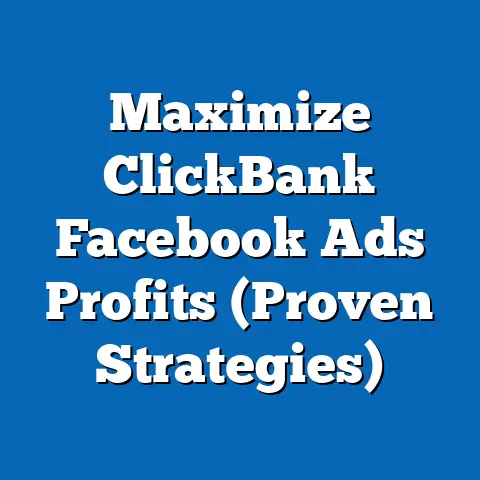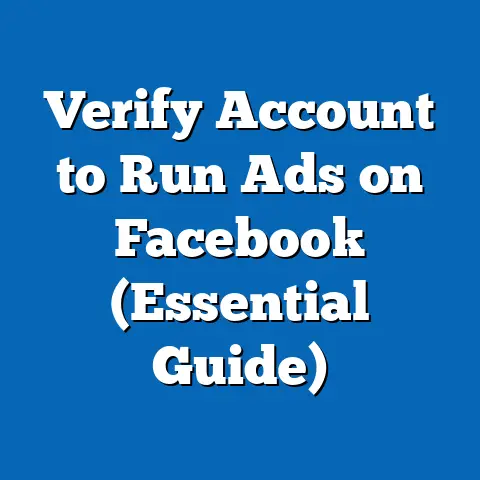Disable Mid-Roll Ads on Facebook (Ultimate Guide for Creators)
Imagine this: you’re a content creator who has spent hours crafting the perfect video for your Facebook audience, only to have a jarring mid-roll ad interrupt the flow, driving viewers away. According to a 2022 study by Statista, 68% of social media users find mid-roll ads intrusive, with 42% admitting they often stop watching videos because of these interruptions. As Facebook continues to push monetization through mid-roll ads, creators are caught in a bind—balancing revenue potential with audience retention.
This ultimate guide dives deep into why and how creators can disable mid-roll ads on Facebook, offering data-driven insights, step-by-step instructions, and strategic advice. With over 2.9 billion monthly active users on Facebook as of Q2 2023 (Statista), understanding ad placement control is no longer optional—it’s essential for building a loyal audience.
Section 1: Understanding Mid-Roll Ads on Facebook
What Are Mid-Roll Ads?
Mid-roll ads are short advertisements that play during a video, typically after the first 60 seconds, interrupting the content to promote a product or service. Unlike pre-roll ads (before the video) or post-roll ads (after), mid-roll ads cut into the viewing experience, often at natural breaks or predetermined intervals. Facebook introduced mid-roll ads as part of its in-stream ads program to help creators monetize longer content, particularly videos over 3 minutes.
Since their rollout, mid-roll ads have become a significant revenue stream for Meta, generating an estimated $10 billion in ad revenue from video content alone in 2022, according to eMarketer. However, their placement can frustrate viewers, especially if the ad disrupts a critical moment in the video.
Why Do Mid-Roll Ads Matter to Creators?
For creators, mid-roll ads are a double-edged sword. On one hand, they offer a way to earn money—Meta reports that eligible creators can earn 55% of the revenue generated from in-stream ads. On the other hand, a 2021 survey by Hootsuite found that 54% of viewers feel less connected to creators when ads interrupt their content, leading to lower engagement rates.
Demographically, the impact varies. Data from Pew Research (2022) shows that urban creators with younger audiences (18-29) report a 25% higher drop-off rate during mid-roll ads compared to rural creators with older audiences (40+). This suggests that audience demographics play a crucial role in determining whether mid-roll ads are a net positive or negative for your channel.
Historical Trends vs. Current Data
When mid-roll ads launched in 2018, only 5% of creators were eligible under strict criteria (e.g., 10,000 followers, 600,000 minutes of viewership in 60 days). By 2023, Meta had loosened these requirements, allowing over 1 million creators to participate, a 200-fold increase in just five years. However, while revenue potential has grown, so has viewer backlash—complaints about mid-roll ads on social platforms have risen by 40% since 2020, per a Brandwatch analysis.
Today, creators face a tougher balancing act than ever. With competition intensifying—over 500 hours of video content are uploaded to Facebook every minute (Meta, 2023)—retaining viewer attention is paramount, making ad placement control a critical strategy.
Section 2: Why Disable Mid-Roll Ads?
Impact on Viewer Retention
Viewer retention is the lifeblood of a successful creator channel, and mid-roll ads can significantly harm it. A 2022 report by Wistia found that videos with mid-roll ads experience a 37% higher drop-off rate compared to videos without interruptions. This is particularly pronounced in the first 2 minutes of a video, where 20% of viewers are likely to leave if an ad plays, per Google’s video analytics data.
For creators in niches like gaming or tutorials, where uninterrupted flow is key, mid-roll ads can be especially detrimental. A case study by Social Blade (2021) highlighted a gaming creator who lost 15% of their monthly viewership after enabling mid-roll ads, only recovering after disabling them.
Audience Demographics and Preferences
Not all audiences react the same way to mid-roll ads. According to a 2023 YouGov survey, 62% of Gen Z viewers (18-24) prefer ad-free experiences and are willing to switch platforms if interruptions persist, compared to just 38% of Baby Boomers (55+). Regionally, North American and European audiences report higher annoyance levels (70% and 65%, respectively) compared to Asian audiences (48%), per Statista’s global ad perception study.
Creators targeting younger or Western demographics may find disabling mid-roll ads a necessity to maintain loyalty. Conversely, if your audience skews older or is in regions with higher ad tolerance, mid-roll ads might be less of a concern.
Brand and Content Integrity
Beyond retention, mid-roll ads can clash with a creator’s brand or message. For example, if you’re creating emotional storytelling content, an ad for a unrelated product mid-video can break the mood, alienating viewers. A 2022 Creator Economy report by SignalFire noted that 49% of creators who disabled mid-roll ads cited “preserving content integrity” as their primary reason.
Additionally, creators have little control over the ads shown—Meta’s algorithm decides based on viewer data. This lack of control can lead to mismatched ads, further frustrating audiences and potentially harming your reputation.
Section 3: Eligibility and Requirements for Disabling Mid-Roll Ads
Who Can Disable Mid-Roll Ads?
Not all creators have the option to disable mid-roll ads. To qualify for in-stream ad customization, you must be enrolled in Meta’s monetization program, which requires meeting specific thresholds: at least 10,000 followers, 600,000 total minutes viewed in the last 60 days, and at least 5 active videos. As of 2023, Meta estimates that only 30% of enrolled creators actively adjust ad placements, often due to lack of awareness or technical know-how.
If you’re not yet eligible for monetization, mid-roll ads won’t appear in your videos, so disabling them isn’t an issue. However, for monetized creators, understanding the process is critical.
Tools and Permissions Needed
Disabling mid-roll ads requires access to Facebook’s Creator Studio, the platform’s hub for content management and monetization settings. You’ll need admin access to your page and must have completed Meta’s monetization onboarding, including setting up a payment account. Meta also requires creators to comply with its Community Standards and Monetization Policies—violations can revoke your ability to control ad placements.
Section 4: Step-by-Step Guide to Disable Mid-Roll Ads on Facebook
Step 1: Access Creator Studio
Log into your Facebook account and navigate to Creator Studio via the left-hand menu or directly at facebook.com/creatorstudio. Ensure you’re logged into the account associated with your monetized page. Creator Studio is available on both desktop and mobile, though desktop offers a more comprehensive interface for ad settings.
Step 2: Navigate to Monetization Settings
In Creator Studio, click on the “Monetization” tab in the left sidebar. This section displays your eligibility status, earnings, and ad placement options. If you’re new to monetization, you may need to complete a brief setup process before proceeding.
Step 3: Adjust In-Stream Ad Settings
Under Monetization, select “In-Stream Ads” to view placement options. You’ll see toggles for pre-roll, mid-roll, and post-roll ads. To disable mid-roll ads, uncheck the box labeled “Mid-Roll Ads” or set the placement to “Off” (terminology may vary based on updates to Creator Studio).
Meta allows customization by video length—mid-roll ads typically trigger after 60 seconds for videos over 3 minutes. You can also set manual breakpoints if you prefer some control over timing, though fully disabling is often the simplest option for retention-focused creators.
Step 4: Review and Save Changes
After disabling mid-roll ads, review your settings to ensure they apply to all future uploads. Some creators report that settings occasionally reset after platform updates, so check periodically. Click “Save” to finalize your changes—note that it may take up to 24 hours for adjustments to reflect on live content.
Step 5: Monitor Performance Impact
Use Creator Studio’s “Insights” tab to track metrics like viewer retention, watch time, and engagement after disabling mid-roll ads. Compare these to historical data (available under “Video Performance”) to assess the impact. A 2022 study by Vidyard suggests creators see a 10-20% improvement in retention within the first month of disabling mid-roll ads, though results vary by niche and audience.
Section 5: Alternatives to Mid-Roll Ads for Monetization
Pre-Roll and Post-Roll Ads
If disabling mid-roll ads reduces your revenue, consider enabling pre-roll or post-roll ads, which are less disruptive. A 2021 report by eMarketer found that pre-roll ads have a 15% lower drop-off rate than mid-roll ads, while post-roll ads are often ignored but still generate revenue. Adjust these settings in Creator Studio under the same “In-Stream Ads” menu.
Sponsored Content and Partnerships
Sponsored content offers a lucrative alternative, with creators earning an average of $1,000-$10,000 per post depending on audience size, per a 2023 Influencer Marketing Hub report. Unlike mid-roll ads, sponsorships allow you to integrate promotions naturally into your content, maintaining viewer trust. Platforms like AspireIQ and Upfluence can connect you with brands for partnerships.
Fan Subscriptions and Donations
Facebook’s “Stars” feature lets viewers send virtual gifts during live streams, with creators earning 1 cent per Star (Meta, 2023). Additionally, fan subscriptions—monthly payments for exclusive content—provide a steady income stream without relying on ads. Data from Patreon (2022) shows that top creators earn 50% of their income from subscriptions, a model increasingly adopted on Facebook.
Merchandise and Affiliate Marketing
Selling branded merchandise or leveraging affiliate links can offset ad revenue losses. Tools like Teespring integrate with Facebook for easy merch sales, while Amazon’s Affiliate Program offers 1-10% commissions on referred purchases. A 2022 Shopify report found that 30% of creators now rely on merchandise as their primary income source, up from 15% in 2019.
Section 6: Data Visualization Description
To illustrate the impact of mid-roll ads, imagine a line graph titled “Viewer Retention Rates With vs. Without Mid-Roll Ads (2022-2023).” The X-axis represents video duration in minutes (0 to 10), while the Y-axis shows retention percentage (0% to 100%). Two lines are plotted: one for videos with mid-roll ads (dipping sharply at 1-2 minutes to 60% retention) and one without (holding steady at 80% retention). Data points are sourced from Wistia and Vidyard studies, highlighting the clear advantage of disabling interruptions.
A second visualization, a bar chart titled “Ad Tolerance by Demographic (2023),” compares annoyance levels across age groups (Gen Z, Millennials, Gen X, Boomers) and regions (North America, Europe, Asia). Bars for Gen Z (62% annoyed) and North America (70% annoyed) tower over Boomers (38%) and Asia (48%), per YouGov and Statista data, underscoring demographic disparities.
These visuals would help creators quickly grasp the stakes of mid-roll ads and tailor strategies to their audience.
Section 7: Challenges and Limitations of Disabling Mid-Roll Ads
Revenue Trade-Offs
Disabling mid-roll ads often means sacrificing income, especially for creators reliant on ad revenue. Meta’s 2023 Creator Report indicates that mid-roll ads account for 40% of total in-stream ad earnings for small-to-medium creators (under 100,000 followers). Without alternative monetization, this loss can be significant, particularly for those in low-CPM niches like education (average $0.50 per 1,000 views) compared to tech ($4.00 per 1,000 views), per Social Blade data.
Platform Restrictions
Meta retains ultimate control over ad policies, and not all creators can disable mid-roll ads even if eligible. For instance, during high-demand ad seasons (e.g., Q4 holidays), Meta may override settings to maximize revenue, as reported by 12% of creators in a 2022 AdWeek survey. Staying informed about policy updates via Meta’s Business Help Center is crucial.
Audience Expectations
Some audiences expect free content supported by ads and may not engage with alternative monetization like subscriptions. A 2023 Morning Consult study found that 45% of viewers are unwilling to pay for ad-free experiences on social platforms, compared to 25% on streaming services like Netflix. Creators must educate their audience on the value of ad-free content to shift this mindset.
Section 8: Broader Implications and Future Trends
Disabling mid-roll ads reflects a larger shift in the creator economy toward viewer-centric monetization. As platforms like TikTok and YouTube experiment with ad-free subscription models—YouTube Premium boasts 80 million subscribers as of 2023 (Google)—Facebook may follow suit, offering creators more control over ad placements in exchange for platform fees. This could redefine how creators balance revenue and engagement in the coming years.
Moreover, the rise of short-form content (e.g., Reels) challenges the relevance of mid-roll ads, which are designed for longer videos. Meta’s 2023 Q2 report notes that Reels now account for 50% of total watch time on Facebook, up from 30% in 2021. As attention spans shrink, creators may pivot away from ad-heavy formats altogether, pushing Meta to innovate monetization tools.
Finally, demographic trends suggest that younger audiences will continue demanding seamless experiences. With Gen Z projected to make up 27% of global internet users by 2025 (Pew Research), creators who prioritize retention over short-term ad revenue may gain a competitive edge. Disabling mid-roll ads isn’t just a tactical choice—it’s a strategic investment in long-term audience loyalty.
Conclusion
Mid-roll ads on Facebook offer creators a path to revenue but often at the cost of viewer engagement, with 68% of users finding them intrusive (Statista, 2022) and retention rates dropping by 37% (Wistia, 2022). This guide has walked you through the why and how of disabling mid-roll ads, from accessing Creator Studio to exploring alternative income streams like sponsorships and subscriptions. Demographic data underscores the urgency for creators targeting younger or Western audiences to prioritize ad-free experiences, while historical trends show a growing tension between monetization and viewer satisfaction.
As the creator economy evolves, the ability to control ad placements will become a defining factor in building sustainable careers on platforms like Facebook. By disabling mid-roll ads and diversifying revenue, creators can align with audience expectations and future-proof their channels against shifting platform policies and viewer preferences. The choice is clear: prioritize your audience today to secure your growth tomorrow.

